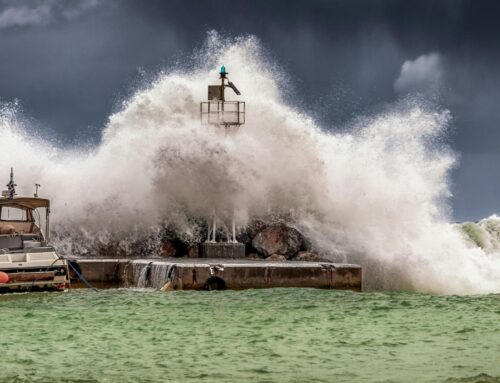As discussed in our last cost analysis here, we broke down the lifetime costs of using dry ice vs. using something more sustainable such as Phase Change Materials. In this cost analysis, we will focus on the supplemental expenses such as packaging and the fact that a large amount of dry ice goes to waste from sublimation. Companies are limited to the amount of dry ice that can be used per package and how many of those packages can be in the same shipping systems. These issues alone create a ton of extra costs that would not be an issue with a replacement such as Phase Change Materials. Let’s break it down.
Overview and Descriptions
Dry ice, also known as solid carbon dioxide (CO2), is a popular choice for a wide range of applications such as food preservation, transportation of medical supplies, and industrial cleaning. Dry Ice is known for its ability to reach very cold temperatures (-78.5 degrees C), which is not ideal for fresh foods and certain pharmaceuticals.
Phase Change Materials (PCMs) are substances that absorb and release heat during the process of changing from one state to another, such as from solid to liquid or liquid to gas. They are commonly used in building materials, cold storage, and temperature-controlled packaging to regulate temperature and reduce energy consumption, making them a strong competitor to dry ice. Many substances can effectively act as a PCM; however, it requires extensive knowledge and research to develop a combination that allows them to maintain an exact constant temperature in the refrigerated or frozen range that is desired.
Initial Cost
While purchasing dry ice alone is already a hefty price, purchasing the correct materials to handle and store the dry ice is even more expensive.
When shipping perishable items with dry ice, it is recommended that the item is packaged with at least a 2-inch thick insulated cooler and plastic slip, along with over two blocks of dry ice depending on the size of the product, and a bigger shipping box to be able to hold all of it.
A shipping container kit for two blocks of dry ice is approximately $59. Dry ice alone costs $1 to $3 per pound on average.
This cost might not be sticker shocking, but due to the fact that dry ice undergoes sublimation and has many shipping requirements the minute it is created, this cost, multiplied by thousands of orders a day, can really cost a company big time.
The cost of purchasing phase change material varies depending on the type of material and the quantity required. Phase change materials can be expensive compared to traditional insulation materials. However, the cost can be offset by the energy savings achieved through the use of PCM plus the lifetime of PCM. Unlike dry ice, PCMs can be used and reused thousands of times without losing effectiveness.
The Cost Of Timeliness
Using dry ice and accounting for sublimation can be tricky for the timing of shipping and really narrows down a company’s ability to expedite shipments. Since dry ice loses so much volume when it is first created and only continues losing it, any perishable item must be monitored and re-iced when necessary.
Dry ice sublimates at -78.5ºC. Sublimation is a process by which a solid directly transforms into a gas without first melting into a liquid. This unique property means that the dry ice simply “disappears” when it heats up.
This means that any package using dry ice should be shipped as swiftly and efficiently as possible. As far as a packaging schedule goes, this could force the sender to use a high-priority shipping method and potentially limit the days available for outbound shipments increasing costs.
Shipping overnight or expedited is more expensive per package than shipping ground. Using a PCM would eliminate the need for such haste as the PCMs can be sustained at their desired temperatures for over 24 hours, depending on the packaging insulation and environmental factors.
Remember that all shipping costs, including overnight shipping, are subject to change at any time. Price fluctuations may result from business service changes, higher demand, limited transportation availability, or entirely different factors.
The Cost Of Preparation
Preparing dry ice comes with a lot of steps, which already indicates lost money due to hours prepping on the clock. The process for preparing a package to ship with dry ice can vary depending on the size of the package and the type of product you are shipping, but the basic process remains the same. Precautions and special PPE are needed to ensure workers and equipment are kept safe when packing with dry ice.
According to FedEx, there are four non-negotiable steps to shipping dry ice: making sure the package is secure and reduces the risk of harm, making sure the package is marked correctly to ensure correct storage, labeling the package correctly to ensure the shipper knowing they are traveling with dry ice, and finally, prepare the correct paperwork and forms.
The only process required when prepping PCM’s is making sure the PCM is frozen thoroughly at the correct temperature. Since PCMs are non-toxic and non-hazardous, there is no extensive preparation to ensure that the package is safe for the handler.
The Cost of Education and The Risks Associated with Handling Dry Ice
When shipping something hazardous, there is a risk involved. When a risk is involved, there is usually training for handling hazardous materials. This alone takes time and money. First, let’s review the risks associated with dry ice.
Dry ice is classified by the International Air Transport Association (IATA) and the FAA as a dangerous good and accordingly requires Dangerous Goods documentation, special handling, and ventilation.
Contact with solid or liquid dry ice can cause frostbite.
The act of sublimation releases mass amounts of Carbon Dioxide, which can be fatal in non-ventilated areas such as a plane or a car, which is what dry ice typically travels in due to its fast-paced nature.
Shipping materials with dry ice in sealed containers can also result in tremendous explosions because of the sublimated CO2 gas expansion.
Because of the risks associated with dry ice, companies will usually be charged a hazmat fee to cover the training and risk taken when shipping with this material. On average, hazmat fees costs range from $37.00 UPS at UPS to about $180 from DHL. This is then compared to zero extra dollars spent with PCMs because they are non-hazardous.
Thermal Custom Packing provides an innovative alternative to dry ice, using PCMs and custom thermal totes. In addition to providing a cost-effect, green solution, we help companies achieve success with their cold chain transport through experience-based advisory services. Find out how you can avoid the lifetime costs of dry ice by connecting with us today.
Sources:
https://www.fedex.com/content/dam/fedex/us-united-states/services/Dry_Ice_Job_Aid.pdf
https://www.shipstation.com/blog/how-do-i-ship-dry-ice/
https://www.uline.com/BL_2157/Insulated-Shipping-Kits



